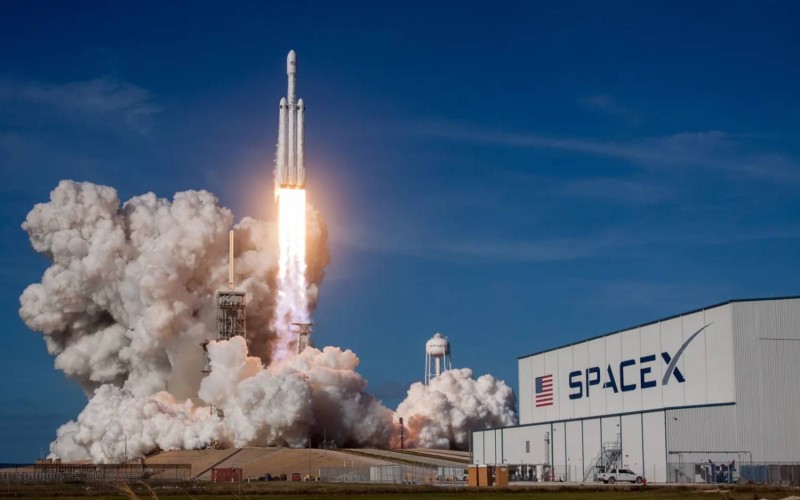
Ever Forward: The Unique Relationship Between the Arctic and Space
- by Wilson Center
- Nov 01, 2024
- 0 Comments
- 0 Likes Flag 0 Of 5

David Marsh
In 1892, a group of adventurers settled on a new idea for Arctic exploration. Rather than using a regular sailing vessel, optimized for speed on the open ocean but weak to the crushing forces of sea ice, they built a ship designed to freeze. As ice closed in, this ship’s rounded hull would allow it to “float” above, riding the icepack through the winter and, hopefully, making it through the Northwest Passage. They named this ship Fram, Norwegian for “forward.” Fram would participate in three polar expeditions: one, led by Fridtjof Nansen in an attempt to reach the North Pole; a second, led by Otto Sverdrup, which charted a massive section of the Northwest Passages and charted the islands now known as the Sverdrup Islands in the Canadian Arctic Archipelago; and a third, led by Roald Amundsen, on the first expedition to reach the South Pole. Amundsen later led the first successful ship-borne journey through the Northwest Passage on a different ship, the Gjøa, in 1906.
Today, in 2024, a different group of adventurers will pioneer another new idea for Arctic exploration. They will not travel by ship, skis, sled, or plane - instead, they’ll travel by spacecraft. They’ll become the first people to orbit the Earth in a polar orbit, “floating” over the North and South poles approximately every ninety minutes as they conduct science experiments and observations. Launching from Cape Canaveral on a SpaceX Falcon 9 rocket, they’ll fly onboard a SpaceX Crew Dragon spacecraft. But they call their mission Fram2.
The Fram2 expedition is only the most recent example of the relationship between space exploration and the Arctic region. Since the days of Sputnik, launched in 1957 during the International Polar Year of international cooperation, these two domains have been tied together by geography and necessity. During the Cold War, the Arctic was heavily militarized, with radar stations and satellite ground antennas strategically placed to cover the shortest distance between the two superpowers, ready to track ballistic missiles.
Now, as competition between NATO, the Russian Federation, and the People’s Republic of China heats up, the Arctic is well-understood as a military domain influenced by space - the latest DoD Arctic Strategy, released in July 2024, mentions space capabilities nineteen times; an increase from thirteen mentions in the 2019 edition. The US and China currently operate independent military branches dedicated to space (the US Space Force - which has a base in Greenland - and the People’s Liberation Army Aerospace Force, while the Russian military is quick to demonstrate and deploy offensive space capabilities.
However, the ties between space and the Arctic expand beyond military maneuvering. There is a larger political, economic, and social relationship that not only impacts the millions of people who call the Arctic home, but everyone on Earth who stands to be affected by climate change. It can even teach us important lessons about life on other planets. In August, I was able to spend two weeks in the Arctic studying this relationship on an expedition sponsored by The Explorers Club and Adventure Canada, and this post includes some observations from that research.
First, we need to talk about physics and geography. Activities in space are intrinsically tied to the geography of the Earth. The most efficient way to launch a rocket is directly to the East and right at the equator, taking maximum advantage of the Earth’s rotation. This is why the main American launch sites are in Florida and southern California; European rockets launch from French Guiana; and the heaviest Chinese rockets take off from Hainan Island in the South China Sea. Sometimes, however, rockets launch in less efficient directions to place payloads in specific orbits. Polar orbits, in which a spacecraft passes over the North and South poles, are used for Earth observation, reconnaissance, weather monitoring, and some telecommunications satellites. Certain near-polar orbits, known as sun-synchronous, are timed to allow a spacecraft to pass over the same spot on the Earth at the same time each day - so that shadows remain the same in every image. Other orbits, such as Molniya and Tundra orbits, are highly elliptical and allow for longer “dwell time” over high latitude areas.
No matter the orbit, spacecraft need to be in communication with the ground as they travel around the planet - about once every ninety minutes, in a polar orbit - and require ground stations with powerful antennas. This results in stations scattered across the globe, from the Australian outback to South Pacific Islands, and, of course, the Arctic. In order to expand their satellite control ability beyond their borders, the PRC operates a fleet of satellite command ships and built a ground station in Argentina. In another example of political geography determining space activities, the orbit of the International Space Station (ISS), which is in Low Earth Orbit at an inclination of about 51.6 degrees, was selected by a joint committee of NASA and Roscosmos. It was chosen over lower (more efficient) orbits because it is the lowest inclination reachable from Baikonur Cosmodrome (the southernmost launch site operated by Russia) without overflying mainland China.
Due to these geographic facts, space and the Arctic are intrinsically connected. The United States, Norway, and Russia each operate launch sites in or near the Arctic Circle, specifically for placing satellites into polar orbits.
Original map from the DOD Arctic Strategy 2024, edited by the author to include dark triangles representing launch sites in Kodiak Island, Alaska; Andøya, Norway; Esrange, Sweden; and Plesetsk, Russia.
Please first to comment
Related Post
Stay Connected
Tweets by elonmuskTo get the latest tweets please make sure you are logged in on X on this browser.
Sponsored
Popular Post
Tesla: Buy This Dip, Energy Growth And Margin Recovery Are Vastly Underappreciated
28 ViewsJul 29 ,2024






 Energy
Energy



















